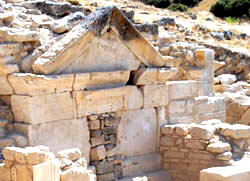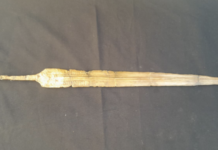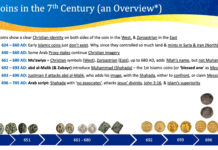By Gil Zohar
A team of Italian archaeologists has announced the discovery here of what they believe to be the tomb of Philip, one of Jesus’ 12 apostles, at the ancient Asia Minor city of Hierapolis in Turkey’s Aegean province of Denizli, and are planning to excavate the unopened grave soon.

The discovery of the grave of the New Testament saint, who came to Hierapolis – known today as Pamukkale – nearly 2,000 years ago to spread the Gospel and was crucified upside down by the Romans, will attract immense attention around the world, said excavator Francesco D’Andria, director of the Institute of Archaeological Heritage, Monuments and Sites at Italy’s National Research Council in Lecce.
Philip’s tomb has traditionally been associated with the martyrium church built at the site, though no evidence of the ancient burial was ever found. In July, however, D’Andria and his team located a smaller church less than 150 feet away from the martyrium that appears to contain the grave of the apostle.
“As we were cleaning out the new church we discovered a month ago, we finally found the grave,” said D’Andria. “With close examination, we determined that the grave had been moved from its previous location in the St. Philip Church to this new church in the fifth century, during the Byzantine era.”
D’Andria has been leading archeological excavations at the ancient city for 32 years. Hierapolis was founded around 190 BC by Eumenes II, King of Pergamum (197 BC-159 BC), The Hellenistic city was given over to Rome in 133 BC and grew into a flourishing Roman metropolis, with temples, a theatre and popular sacred hot springs, believed to have healing properties.
“Until recently, we thought the grave of St. Philip was on Martyrs’ Hill, but we discovered no traces of him in the geophysical research conducted in that area. A month ago, we discovered the remnants of an unknown church, 40 meters away from the St. Philip Church on Martyrs’ Hill. And in that church we discovered the grave of St. Philip,” D’Andria said.
“St. Philip is considered a martyr. In fact, the church built in his name on the Martyrs’ Hill is, for this reason, also called Martyrion, despite the fact there were no traces of the grave of St. Philip. As we were cleaning out the new church we discovered a month ago, we finally found the grave. With close examination, we determined that the grave had been moved from its previous location in the St. Philip Church to this new church in the fifth century, during the Byzantine era. We are extremely happy and proud to have discovered the grave of a saint whose name appears in the bible – this surely is an important discovery for religious tourism, archaeology and Christendom.”
——————————————————————————–
Gil Zohar is a Jerusalem-based journalist and tour guide and a frequent blogger on www.Travelujah.com. He can be reached at GilZohar@rogers.com.



